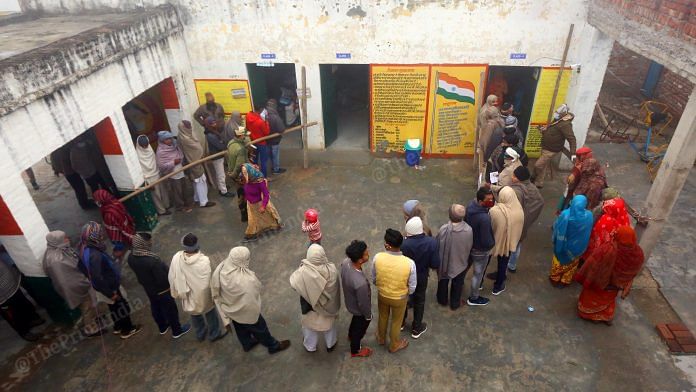If one closely observes the politics of ticket distribution in the third phase of the Uttar Pradesh assembly election, it would be clear that all the parties have taken both caste and social arithmetic into consideration. From Bahujan Samaj Party to Samajwadi Party to Bharatiya Janata Party — all have given an impressive number of tickets to the candidates from Dalits and Other Backward Class communities.
The 16 districts — Agra to Kanpur — that go to polling in the third phase, are an electoral war zone witnessing some of the most interesting political battles in Bundelkhand. Traditionally known as the zones where the BSP of Mayawati boasts clout, it also has odd places like Etawah where the Samajwadi Party of Akhilesh Yadav has a stronghold. It’s also to be noted that the emerging BJP is also a major player in these areas.
A combination of broader social alliances between Hindu communities and the overarching ‘Modi factor’ helped the BJP establish a foothold in the 2017 UP assembly election. However, none of the parties would have stood a chance without Dalit and Yadav communities in this region.
Socialism plays a big role too. Remember, this is the same place where the B.R. Ambedkar-led Republican Party of India (RPI) was active in the 1960s and ’70s. It was only in the ’80s that the BSP began replacing it. It was also the place where Ram Manohar Lohia’s Samyukta Socialist Party enjoyed success and his friend Ramswaroop Verma’s Arjak Sangh took its flight. These areas have always been the centre of non-Congress politics even when the party was at the height of its powers.
Also read: Move over M-Y alliance, Hindu-Muslim binary. Parties in UP polls stitching micro castes
BSP, SP and BJP ticket distribution
The BJP’s strategy seems to be more focused on Scheduled Castes and Other Backward Class (OBC) voters evident in giving candidates from these communities an impressive representation in its third and fourth list, which caters to the constituencies in the third phase of UP election on 20 February.
It has given 49 seats to the SC and OBC candidates — 19 seats to the former and 30 to the latter. By analysing the pattern of ticket distribution, one can easily see that the BJP has tried to micromanage the sharing even within the OBC category. It gave tickets in its third and fourth list to candidates from Lodhi, Kurmi, Nishad, Yadav, Kushwaha, Shakya, and Saini communities who are numerically powerful in this region. The women’s representation is also evident in both lists.
The BJP’s strategy also reflects a shift in its electoral discourse from the first two phases. The party’s campaign in those phases was heavily focused on law-and-order issue. Other debates occupied less space in the deliberations. In their election speeches, Prime Minister Narendra Modi and other leaders mostly discuss issues related to the poor, Dalits and deprived communities. Other matters may appear as sub-discourse in the third phase of the UP election.
The BSP, on the other hand, has given 18 seats to Scheduled Castes and 18 seats to OBCs. It has given tickets to dominant caste candidates based on their numerical presence — seven seats to Brahmins, six seats to the Thakurs and one seat to the Baniya community. Interestingly, the BSP allotted a good number of these seats in the constituencies that polled in the first and second phases and gave only three seats to Muslim candidates. It says how numbers matter in electoral democracy.
Meanwhile, the Samajwadi Party has given 12 seats to SCs and 23 seats to OBCs. Among the latter, 11 seats have been given to the Yadav community and 12 to non-Yadav OBC communities consisting of Kurmi, Kushwaha, Nishad and Pal castes. So, the SP, also like BSP, has attempted social engineering of sorts by following this pattern of ticket distribution.
Along with social engineering in ticket distribution, trust, credibility and performance of the political parties may also play an important role in establishing winnability in this election. All we can do is wait and see how the public in the voting regions respond to the issues, agendas and candidates of the political parties in the 2022 UP assembly election.
The author is Professor and Director at the G.B. Pant Social Science Institute, Allahabad. He tweets @poetbadri. Views are personal.
(Edited by Srinjoy Dey)



